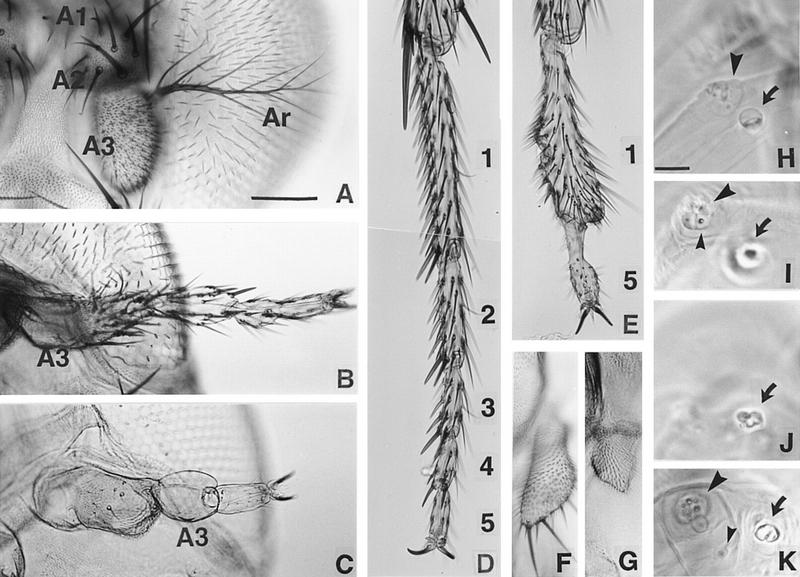Figure 4.

Cuticular phenotypes of ss mutants. The antennal and leg phenotypes of ss mutants have been described by others [see Lindsley and Zimm (1992) and references therein]. (A,B) Antennae from wild-type (A) and ssa (ssD114.10/ssD114.4) (B) adults. The first (A1), second (A2), and third (A3) antennal segments and the arista (Ar) are indicated. The antennal tarsus in ssa mutants is judged to have T2 identity by the following criteria: Paired rows of stout bracted macrochaetae present ventrally (Hollingsworth 1964) are like those on the second leg; the most distal bristle pair in each segment is larger than more proximal pairs; on average, there are three pairs of bristles in the fifth tarsal segment (Lawrence et al. 1979); and there are no posterior transverse bristle rows in the second tarsal segment. (C) Antenna from a ss null mutant (ssD115.7). A3 has no bristles or trichomes, and most of the distal tarsal region is absent. (D–E) Distal second leg of wild-type and a ss null mutant. Tarsal segments 2–4 and part of segment 1 are deleted in E. (F,G) Wild-type and ss null mutant maxillary palps. The mutant palps are truncated. (H– K) Wild-type (H,I) and ss null mutant (J,K) first instar antennal and maxillary sense organs (AnSO and MxSO). The AnSO is indicated with a large arrow, the MxSO with a large arrowhead, and the dorsomedial papilla (DMP) with a small arrowhead. In the mutant the AnSO is cauliflower-shaped and has no clear stalk, and migration of the DMP is impaired. Scale bars, A–G (shown in A), 100 μm; H–K (shown in H), 10 μm.
